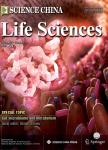Genetic analysis and mapping of gene fzp(t)controlling spikelet differentiation in rice
Genetic analysis and mapping of gene fzp(t) controlling spikelet differentiation in rice作者机构:College of Crops Fujian Agricultural & Forestry University Fuzhou 350002 China Academy of Agricultural Science Fujian Province Fuzhou 350000 China Institute of Genetics & Developmental Biology Chinese Academy of Sciences Beijing 100080 China
出 版 物:《Science China(Life Sciences)》 (中国科学(生命科学英文版))
年 卷 期:2003年第46卷第3期
页 面:328-334页
基 金:supported by the Tenth Five-year National High Technology Research and Development Program of China(863 2001AA222271) partly by the State Key Basic Research and Development Program of China(G1999011602)
主 题:rice (O. sativa L), spikelet differentiation, fzp, genetics, gene mapping.
摘 要:A mutant of spikelet differentiation in rice called frizzle panicle (fzp) was discovered in the progeny of a cross between Oryza sativa ssp. indica cv. V20B and cv. Hua1B. The mutant ex-hibits normal plant morphology but has apparently fewer tillers. The most striking change in fzp is that its spikelet differentiation is completely blocked, with unlimited subsequent rachis branches generated from the positions where spikelets normally develop in wild-type plants. Genetic analy-sis suggests that fzp is controlled by a single recessive gene, which is temporarily named fzp (t). Based on its mutant phenotype, fzp (t) represents a key gene controlling spikelet differentiation. Some F2 mutant plants derived from various genetic background appeared as the middle type? suggesting that the action of fzp (t) is influenced by the presence of redundant, modifier or interac-tive genes. By using simple sequence repeat (SSR) markers and bulked segregant analysis (BSA) method, fzp (t) gene was mapped in the terminal region of the long arm of chromosome 7, with RM172 and RM248 on one side, 3.2 cM and 6.4 cM from fzp (t), and RM18 and RM234 on the other side, 23.1 cM and 26.3 cM from fzp(t), respectively. These results will facilitate the positional cloning and function studies of the gene.



